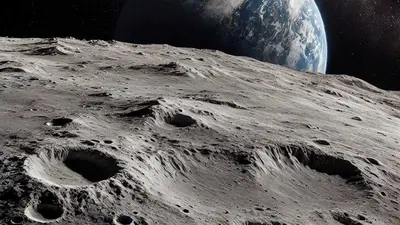
Surprising Chinese Moon Find
Chinese scientists have uncovered an astonishing secret while examining samples collected from the Moon by the Chang'e-5 mission in December 2020. This groundbreaking find could reshape our plans and ideas about the Moon forever.
For the first time, scientists discovered naturally occurring "few-layer graphene" on the Moon. This ultra-thin, super-strong material could be a game-changer for future lunar explorers looking to use resources found directly on the Moon. Imagine astronauts mining this valuable substance to build advanced technology right on the lunar surface!
But that's not all. This discovery could rewrite the story of the Moon's origin. Many scientists have long believed that the Moon was created when a smaller planet crashed into Earth billions of years ago. This collision supposedly brought carbon to the Moon. However, the new findings suggest a different story.

Researchers from Jilin University, who published their study in the journal National Science Review, argue that there might be a "carbon-capture process" happening on the Moon. This means the Moon could have been gathering carbon naturally over time. If true, this challenges the long-held theory that the Moon's carbon came from a massive impact.
Using a technique called "Raman spectroscopy," which allows them to analyze materials without damaging them, the team confirmed the existence of few-layer graphene. This special form of graphene has between two and ten layers and is usually made in labs on Earth. The presence of this material on the Moon suggests it might have formed from the intense solar wind hitting the lunar surface or from ancient volcanic eruptions.

The idea that pure, indigenous carbon exists on the Moon could upend our understanding of its formation. If the Moon didn't get its carbon from a planetary collision, where did it come from? This mystery deepens as scientists speculate that meteorites might also have contributed to the Moon's carbon supply.
The implications are enormous. Further study of this natural graphene could reveal more about the Moon's geological past, giving us clues about its evolution and history. The team of researchers is excited about what this could mean for science and our future lunar missions.

Recommended

